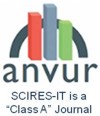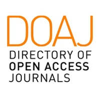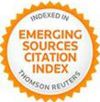Abstract
The role of Extended Reality (XR) in education is growing within universities and offers valuable research opportunities in interdisciplinary development. This contribution illustrates the didactic activity of the 2023/2024 seminar ‘Inside the Museum’, which utilises XR for communicating architectural design projects. The course integrates exhibit design with digital technologies in the museum sector and introduces students to open and web-based AR and VR tools. Students learn the fundamentals of HTML for developing applications using ar.js, and GitHub as a repository for teaching activities. The teaching staff collaborates in creating digital content for classroom exercises, fostering shared and guided learning through innovative teaching approaches. The digital assets developed aim to collect student design ideas and establish a replicable workflow for digital communication and representation in various disciplines.
Keywords
Full Text:
PDFDOI: http://dx.doi.org/10.2423/i22394303v15n1p97
References
Bennett, L. A. (2008). The potential and uniqueness of virtual environments for education. New horizons in adult education and human resource development, 22(3), 53-59. https://doi.org/10.1002/nha3.10317
Bombari, D., Schmid Mast, M., Canadas, E., & Bachmann, M. (2015). Studying social interactions through immersive virtual environment technology: virtues, pitfalls, and future challenges. Frontiers in psychology, 6, 1-11. https://doi.org/10.3389/fpsyg.2015.00869
Bonacini, E. (2020). I musei e le forme dello storytelling digitale. Roma: Aracne.
Buhalis, D., & Karatay, N. (2022). Mixed reality (MR) for generation Z in cultural heritage tourism towards metaverse. In J. L. Stienmetz, B. Ferrer-Rosell, D. Massimo (Eds), Information and communication technologies in tourism 2022: Proceedings of the ENTER 2022 eTourism conference, January 11-14, 2022 (pp. 16-27). Cham: Springer International Publishing. https://doi.org/10.1007/978-3-030-94751-4_2
Caliari, P. F., Spallone, R., Lamberti, F., Giovannini, E. C., Natta, F., Diatta, A. L., Fiorenza, J., & De Lorenzis, F. (2024). Virtual Reconstruction, Museography, and VR/AR Communication in Design for Heritage. In Advances in Representation: New AI-and XR-Driven Transdisciplinarity (pp. 217-235). Cham: Springer Nature Switzerland. https://doi.org/10.1007/978-3-031-62963-1_13
Cao, Y., Gao, X., Yin, H., Yu, K., & Zhou, D. (2024). Reimagining Tradition: A Comparative Study of Artificial Intelligence and Virtual Reality in Sustainable Architecture Education. Sustainability, 16(24), 1-21. https://doi.org/10.3390/su162411135
Clini, P., Angeloni, R., D'Alessio, M., & Quarchioni, R. (2023). Enhancing onsite and online museum experience through digital reconstruction and reproduction: The Raphael and Angelo Colocci temporary exhibition. SCIRES-IT-SCIentific RESearch and Information Technology, 13(2), 71-84.
Crolla, K., Song, J., Bunica, A., & Sheikh, A. T. (2024). Integrating extended reality in architectural design studio teaching and reviews: Implementing a participatory action research framework. Buildings, 14(6), 1-24. https://doi.org/10.3390/buildings14061865
De Marco, R. (2025). The spiritual architecture of Maqamat: From the digitisation of Architectural Heritage sites to the enhancement of cultural memory through virtual narratives. Cidades. Comunidades e Territórios. https://doi.org/10.15847/cct.39778
De Marco, R. (2024). Integration of Digital Repositories and Spatial Design within the Metaverse: the Evaluation of Features and Narratives to set Learning Environments on Cultural Heritage. ISPRS- International Archives of the Photogrammetry, Remote Sensing and Spatial Information Sciences, 48, 147-154. https://doi.org/10.5194/isprs-archives-XLVIII-4-2024-147-2024
Gattupalli, A. (2024, February 5). Transforming Architectural Education with Augmented and Virtual Reality. https://www.archdaily.com/1012936/transforming-architectural-education-with-augmented- and-virtual-reality
Giovannini, E.C. (2024). Social Virtual Environments: Opportunities and Workflows in Cultural Heritage and Education in Architecture. In Proceedings of the 16th International Conference on Computer Supported Education CSEDU (pp. 772-783). SciTePress. https://doi.org/10.5220/0012758500003693
Giovannini, E.C., & Bono, J. (2023). Creating Virtual Reality Using a Social Virtual Environment: Phygital Exhibition at the Museum Passion in Sordevolo. The International Archives of the Photogrammetry, Remote Sensing and Spatial Information Sciences, 48, 669-676. https://doi.org/10.5194/isprs-archives-XLVIII-M- 2-2023-669-2023
Giovannini, E.C., Ronco, F. (2022). Dentro il museo: creare esperienze culturali in realtà aumentata /inside the museum: creating cultural experiences in augmented reality. In C. Battini, E. Bistagnino (Eds.). Dialoghi. Visioni e visualità. Testimoniare Comunicare Sperimentare. Atti del 43° Convegno Internazionale dei Docenti delle Discipline della Rappresentazione/Dialogues. Visions and visuality. Witnessing Communicating Experimenting. Proceedings of the 43rd International Conference of Representation Disciplines Teachers (pp. 2523-2538). FrancoAngeli. http://dx.doi.org/10.3280/oa-832-c157
Giovannini, E.C., Ronco, F., Bono, J. (2024). INSIDE THE MUSEUM Experience. A Virtual Exhibition of Didactic Activities Using AR/VR Applications. In A. Luigini (Ed.), Proceedings of the 2nd International and Interdisciplinary Conference on Digital Environments for Education, Arts and Heritage. EARTH 2023. Springer Series in Design and Innovation, vol 36. (pp. 103-125). Cham: Springer. https://doi.org/10.1007/978-3-031-73823-4_12
Gomez-Tone, H. C., Alpaca Chávez, M., Vásquez Samalvides, L., & Martin-Gutierrez, J. (2022). Introducing immersive virtual reality in the initial phases of the design process—case study: freshmen designing ephemeral architecture. Buildings, 12(5), 1-19. https://doi.org/10.3390/buildings12050518
Guo, X., Guo, Y., & Liu, Y. (2021). The development of extended reality in education: Inspiration from the research literature. Sustainability, 13(24), 1-20. https://doi.org/10.3390/su132413776
Hebatallah H.M. (2024) Architecture Education in the Metaverse: Opportunities and Challenges. In H. R. Husain (Ed), AI-Driven Architecture: Pioneering the Digital Frontier (pp. 187-208). Alanya/Antalya: Alanya University Publication
Jeong, J., Chen, Q., Kim, N., & Lee, H. (2022). Virtual reality collaborative platform for e-learning: Analysis of student engagement and perceptions. In J. Van Amejde, N. Gardner, K. Hoon Hyun, D. Luo & U. Sheth (Eds.), Proceedings of the 27th International Conference on Computer-Aided Architectural Design Research in Asia (CAADRIA) (pp. 19-28). Sydney: CAADRIA. https://doi.org/10.52842/conf.caadria.2022.1.019
Kharvari, F., & Kaiser, L. E. (2022). Impact of extended reality on architectural education and the design process. Automation in Construction, 141, 1-19. https://doi.org/10.1016/j.autcon.2022.104393
Lee, H., & Hwang, Y. (2022). Technology-enhanced education through VR-making and metaverse-linking to foster teacher readiness and sustainable learning. Sustainability, 14(8), 1-21. https://doi.org/10.3390/su14084786
Liu, S., Zhao, X., Meng, X., Ji, W., Liu, L., Li, W., Tao, Y., Peng, Y. & Yang, Q. (2024). Research on the application of extended reality in the construction and management of landscape engineering. Electronics, 13(5), 1-29. https://doi.org/10.3390/electronics13050897
Lu, Y. (2022). Teaching architectural technology knowledge using virtual reality technology. Canadian Journal of Learning and Technology, 48(4), 1-26. https://doi.org/10.21432/cjlt28253
Ludovici, A. M. (2012). Palazzo Biandrate Aldobrandini di San Giorgio a Torino: gli appartamenti barocchi tra storia, arte e restauro. Torino: Edizione del graffio.
Mezzino, D. (2023). Digital visualization for cultural dissemination. SCIRES-IT-SCIentific RESearch and Information Technology 13(1), 135-152. https://doi.org/10.2423/i22394303v13n1pI
Milgram, P., & Kishino, F. (1994). A taxonomy of mixed reality visual displays. IEICE Transactions on Information and Systems, 77(12), 1321-1329.
Ramesh, M. R. (2025). Virtual Communities: Current Status and Challenges. In D. Darwish (Ed.), Building Power, Safety, and Trust in Virtual Communities (pp. 281-296). Hershey, PA: IGI Global Scientific Publishing. https://doi.org/10.4018/979-8-3693-3868-1.ch013
Ratten, V. (2023). The post COVID-19 pandemic era: Changes in teaching and learning methods for management educators. The International Journal of Management Education, 21(2), 1-8. https://doi.org/10.1016/j.ijme.2023.100777
Reis, I. W., Romeiro, A. E., Berg, C. H., & Ulbricht, V. R. (2024). Sociodigital experiences and creativity in the metaverse: An integrative review. Heliyon, 10, 1-12. https://doi.org/10.1016/j.heliyon.2024.e29047
Roudavski, S. (2010). Virtual Environments as Techno-Social Performances: Virtual West Cambridge Case- Study. In D. Bharat, I.L. Andrew, G. Ning and P. Hyoung-June (Eds.), CAADRIA2010: New Frontiers, the 15th International Conference on Computer Aided Architectural Design Research in Asia (pp. 477-486).
Sen, E. A. (2024, March 8). Embracing Innovation: New Approaches in Architectural Education. https://illustrarch.com/articles/22715-embracing-innovation-new-approaches-in-architectural- education.html
Skarbez, R., Smith, M., & Whitton, M. C. (2021). Revisiting Milgram and Kishino's reality-virtuality continuum. Frontiers in Virtual Reality, 2, 1-8. https://doi.org/10.3389/frvir.2021.647997
Sopher, H., Kalay, Y. E., & Fisher-Gewirtzman, D. (2017). Why immersive? Using an immersive virtual environment in architectural education. In A. Fioravanti et al. (Eds.), 35th eCAADe Conference: Vol. 1. ShoCK!– Sharing of Computable Knowledge! (pp. 313-322). Roma: eCAADe.
Spitzer, B. O., Ma, J. H., Erdogmus, E., Kreimer, B., Ryherd, E., & Diefes-Dux, H. (2022). Framework for the use of extended reality modalities in aec education. Buildings, 12(12), 1–20. https://doi.org/10.3390/buildings12122169
Tomasella, N., Camagni, F., & Ippoliti, E. (2024). Il ruolo dei Virtual Tour per l’accessibilità e l’inclusione del patrimonio museale. In T. Empler, A. Caldarone, A. Fusinetti (Eds.), DAI–Il Disegno per l’Accessibilità e l’Inclusione–2024 (pp. 508-523). Alghero: PUBLICA.
Wang, J., Ma, Q., & Wei, X. (2023). The application of extended reality technology in architectural design education: a review. Buildings, 13(12), 1-23. https://doi.org/10.3390/buildings13122931
Wei, X., Jin, X., Lin Kan, G., Yan, Y., & Fan, M. (2025). Systematic literature review of using virtual reality as a social platform in HCI community. In Proceedings of the ACM on Human-Computer Interaction, (pp. 1-36). New York, NW: Association for Computing Machinery.
Zagalsky, A., Feliciano, J., Storey, M. A., Zhao, Y., & Wang, W. (2015). The emergence of github as a collaborative platform for education. In Proceedings of the 18th ACM conference on computer supported cooperative work & social computing (pp. 1906-1917). New York: Association for Computing Machinery. https://doi.org/10.1145/2675133.2675284
Web Sources
A-Frame. Retrieved from https://aframe.io/
AR.js Augmented Reality on the Web. Retrieved from https://ar-js-org.github.io/AR.js-Docs/
artoolkitX. Retrieved from https://github.com/artoolkitx
Museo Archivio Reale Mutua. Retrieved from https://museorealemutua.org/
three.js. Retrieved from https://threejs.org/
Article Metrics
Metrics powered by PLOS ALM
Refbacks
- There are currently no refbacks.
Copyright (c) 2025 Elisabetta Caterina Giovannini, Jacopo Bono

This work is licensed under a Creative Commons Attribution-NonCommercial-NoDerivatives 4.0 International License.
SCIRES-IT, e-ISSN 2239-4303
Journal founded by Virginia Valzano






